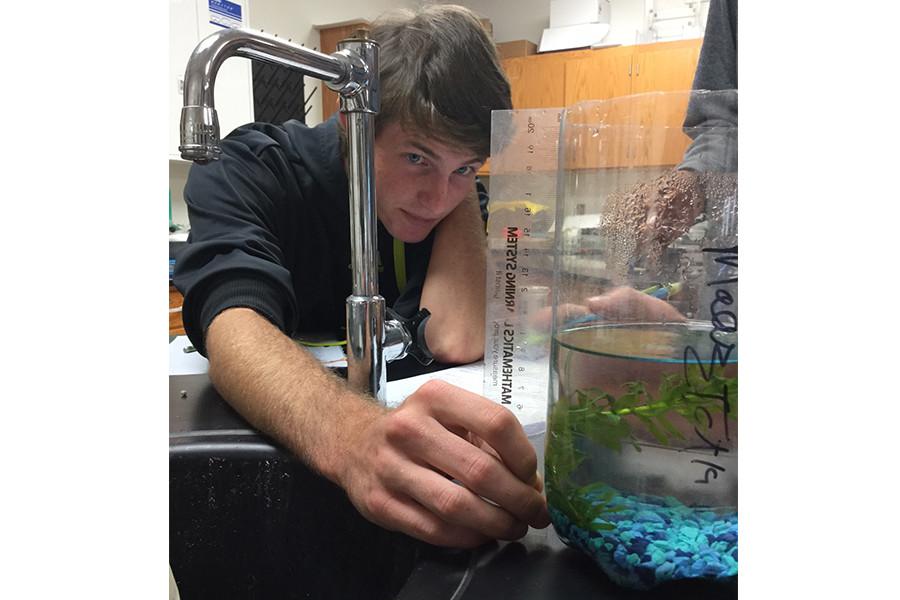Flipped Classrooms
Teachers begin to follow new style for lessons
To collect data for his eco-column fish tank, Senior Jake Schrass measures his fish’s food supply, the sea plant. “This experiment teaches us the relationship between terrestrial and aqueous habitats,” Schrass said. “It shows us how nutrients are shared between different food chains. It was a lot of fun, but the most important skill I have learned so far would be how to not kill Caesar, my group’s fish.”
He sits in the back, grading papers while the students collect data from their homemade fish tanks. AP Environmental Science teacher Joshua Nielsen teaches his classroom with the “flipped classroom” style.
Nielsen first heard about flipped classrooms five years ago and implemented it in his APES classes last year.
Before he converted to the idea of a flipped classroom, Nielsen taught with the traditional method. With this, he found that students weren’t able to discuss problems they had questions on.
“With a flipped classroom, they’re allowed to watch the boring lecture at home and the homework can be done in class,” Nielsen said. “They can ask questions and I can help them while in class. They do all the boring stuff at home and the stuff they need help on they can do it in class with me.”
This gives more time for hands-on work with the student and teacher Nielsen said.
Head tennis coach Kyle Apperson has been at Rider for eight years and taught World History for six of those years. He started in his second year at Rider teaching World History, and he began to teach the traditional way like many other teachers. He started to make videos of his lectures for the students who missed the class lecture. On his third year of teaching he decided to put all of his lectures online for his class to use.
“The worst part of lecturing is keeping kids interested,” Apperson said. “Like it or not, we are entertainers, and there’s a lot of teachers that are not entertaining. With lectures recorded, kids can watch at their leisure.”
While this method isn’t perfect, it can still be improved, so Nielsen always looks for ways to better it.
“There is nothing that is absolutely perfect,” Nielsen said. “You can always find something to make it better. I’m always looking for things that didn’t work, so that I can fix it for next year.”
As this method isn’t for everybody, it can’t be used if the teacher isn’t able to make the extra effort. Senior Adam Hendricks feels this way. He first heard about APES through students who took it last year and heard nothing but good things. So he decided to take it this year. He gets a vibe that he doesn’t get from other classes.
“I walk into his class and immediately feel different,” Hendricks said. “It is not like Calculus where you have to sit there and listen. Nielsen’s class is more like hands-on stuff.”
Hendricks knew Nielsen before he took his class, and knows how silly and funny he can be. Nielsen brings this silliness to his classroom.
“When we are doing our work he says ‘Why are you guys so quiet?’, because he wants us to get involved and wants us to help each other out,” Hendricks said. “He has fun with teaching, but we are still learning stuff. Most people think it’s not possible, but Mr. Nielsen has definitely proven that it is.”

